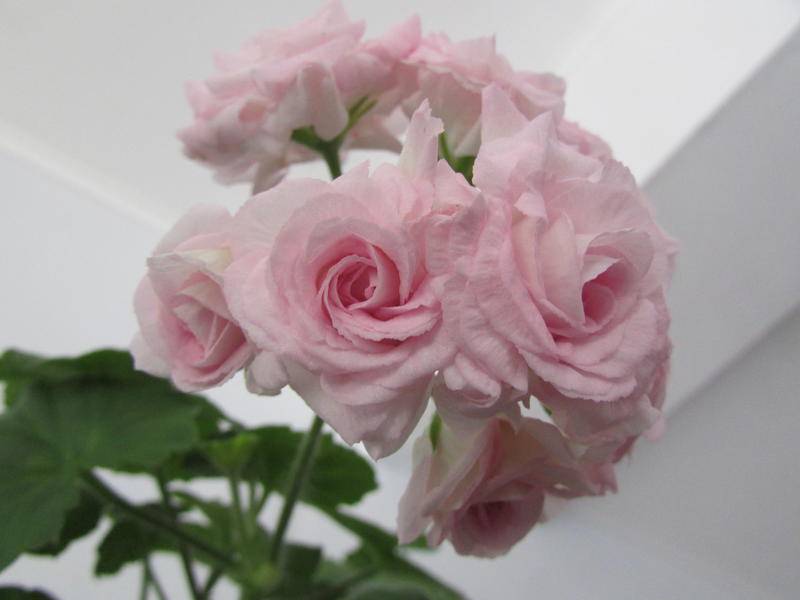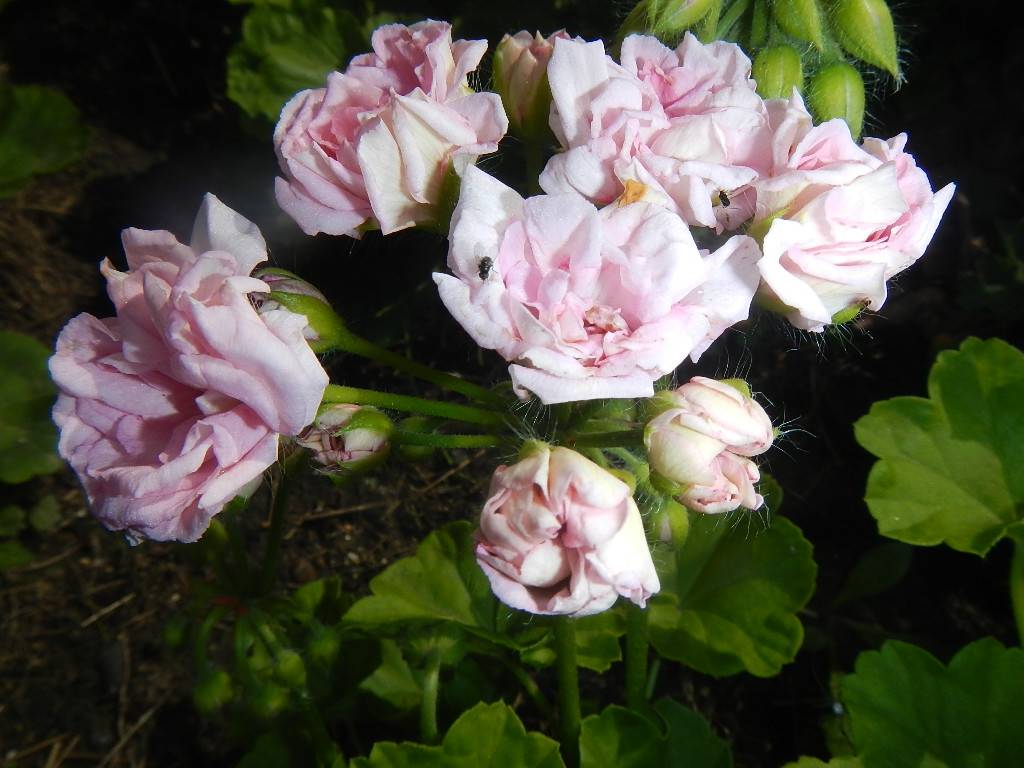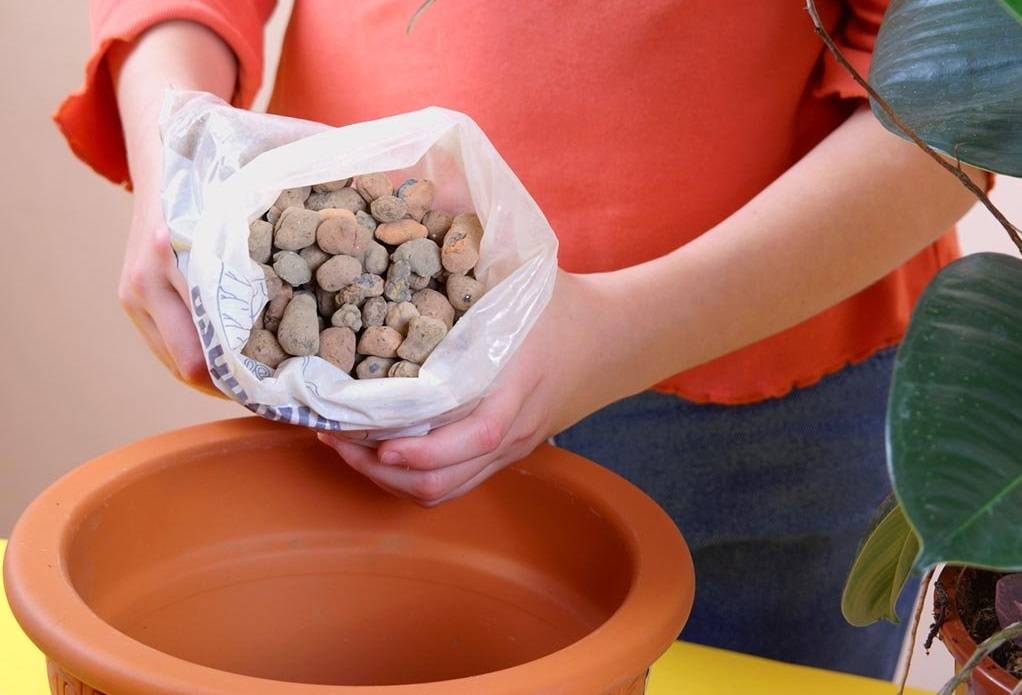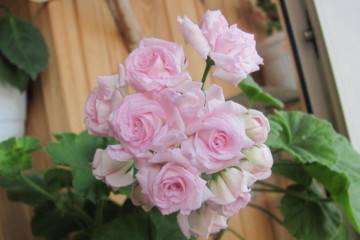Pelargonium Lady Gertrude
Content:
Pelargonium Lady Gertrude is a hybrid variety that was obtained by crossing hybrid and ivy geraniums. From the side, the flower resembles a rose.
Short description
Pelargonium Lady Gertrude was bred as a result of long-term selection work. Experts have spent a quarter of a century to obtain a plant with unusual external data.
This pelargonium has a compact size. The average height is about 35 cm, but it is advisable to carry out pruning in the fall, this will help form a lush crown. Differs in late flowering. A peculiarity of the species is the inflorescences of a delicate pink color, which resemble a rose in shape.
History of creation
Geranium Lady Gertrude was created by European breeders. They wanted to get a plant that would bloom in the summer-autumn period. Along with this, experts sought to discover a new type of pelargonium. It was supposed to get a plant of low height and unique flowering. Their work lasted for 25 years. To develop a new variety, various hybrid and ivy-leaved species were used. As a result, their labors were crowned with success. The name of the new variety was given in honor of the Dutch Countess.
Features of proper care
In order for any plant to develop and bloom, it needs to create suitable conditions for keeping. Growing geraniums is available to beginners, but they need to take into account the characteristics of each variety.
Light and temperature
Do not place the pot in direct sunlight, they will burn the plant. An east window and diffused light work best. Can be supplemented with phytolamps.
With an excess of sun, the plant becomes sluggish and stops growing, so in the afternoon it is better to rearrange the pot to partial shade.
The maximum duration of daylight hours is 8 hours. In summer, the temperature must be maintained at 25 ° C, in winter - 15 ° C. A critical decrease is 10 ° C, and this will already negatively affect the condition of the plant.
A flower like Lady Gertrude is a beautiful pelargonium, the description of the variety does not convey all its unusualness. Such geranium does not tolerate excessive heat, and a temperature rise of up to 30 ° C will be disastrous.
Watering
Pelargonium needs moderate moisture. Do not allow the soil to dry out excessively, but you should not fill the pot either. The roots of the plant rot easily, so you need to provide a drainage layer in the ground.
In the summer, geraniums are watered 3-4 times a week with warm water. In winter, it is reduced to 1-2 times a week. In the cool season, do not water with a window ajar, as pelargonium can get sick and rot.
Priming
Caring for pelargonium is simple, but several nuances must be observed. For the development of the root system, a loose and nutritious soil is needed. The store has ready-made mixes that are created specifically for this type.
You can make the soil yourself.For this, peat, sand, turf soil are taken in equal parts, which are mixed. The prepared soil can be used for transplanting any geraniums.
After transplanting, the plant is gently watered. If everything went well, then the pelargonium will have new shoots.
Top dressing
Since spring, you need to actively apply fertilizers with potassium and phosphorus, these two components stimulate flowering. The drugs are poured into the pot every two weeks. You can not use products with nitrogen, as it affects the growth of green mass.
Pot size
Sometimes pelargonium does not bloom in any way and the owner may not understand what prevents her from doing this. Everything can be in a large pot, in which case the plant is actively growing its root mass.
The capacity should be 1-1.5 cm larger than the earthen coma, otherwise the geranium will not release flower stalks for a long time.
Pruning
Geranium pruning is carried out in autumn. For this, 1/3 of the height of the shoots is removed. This is to stimulate branching. The cut pieces can be used for rooting.
Flowering features
Pelargonium Lady Gertrude blooms later than other varieties. This usually occurs in mid-summer and lasts until mid-autumn. This duration allows you to enjoy beautiful flowers for a long time.
From the middle of autumn, they begin to prepare pelargonium for a dormant period. Before this, all dried peduncles are cut off, pruning is carried out and fertilization is stopped.
In winter, the plant should store up strength for the next year. Therefore, you should not move the pot anywhere, transplant geranium and somehow inconvenience it, otherwise all this will negatively affect flowering. The number of waterings is also reduced. The ground is allowed to dry out a little between waterings, but long periods of drought are not allowed. Reduce by an hour or two daylight hours.
In mid-spring, the flower begins to gradually withdraw from the dormant period. To do this, they begin to water more pelargonium and supplement it with phytolamps. At the end of spring, you can transplant the plant and add top dressing. Subject to the transition to a period of rest and activity, geranium begins to actively and luxuriantly bloom.
Reproduction
Pelargoniums are traditionally bred by cuttings, this allows you to maintain hybrid properties. The Lady Gertrude variety is no exception, so it is preferable to propagate it in this way.
Cuttings
After pruning, many branches remain. You need to choose the strongest and healthiest, which are suitable for rooting. The lower leaves are removed from them. Then there are two options - the cuttings can be placed in water or immediately dropped into the ground. Both methods are good and branches take root quickly.
You can add a root preparation or its analogs to the water, growth stimulants will speed up the process of root emergence. Some growers prefer to plant cuttings directly into the ground. In this case, the branch is deepened by three centimeters, carefully watered and covered with a glass jar. This design allows you to create a greenhouse effect. In high humidity and warmth, pelargonium will germinate faster.
Seeds
A more laborious method is seed propagation. The seed must be harvested after flowering, when seed bolls are formed in place of the peduncles. They are torn off and the seeds are carefully poured. The collected material must be kept in a weak pink solution of manganese for a day before planting. Such processing will stimulate growth.
After the seeds are planted in soil for geraniums and covered with glass or a plastic bag. The greenhouse allows you to speed up the appearance of the first shoots.As soon as they reach a height of 3-4 cm, they are transplanted into new pots.
Problems
If Lady Gertrude's pelargonium does not bloom or grow in any way, then the problem may be in improper care. In this case, you need to analyze the conditions of the plant.
Common mistakes
If the geranium is actively growing, its branches stretch out, but it does not bloom, it's all about a lack of lighting. You need to trim and rearrange the pot.
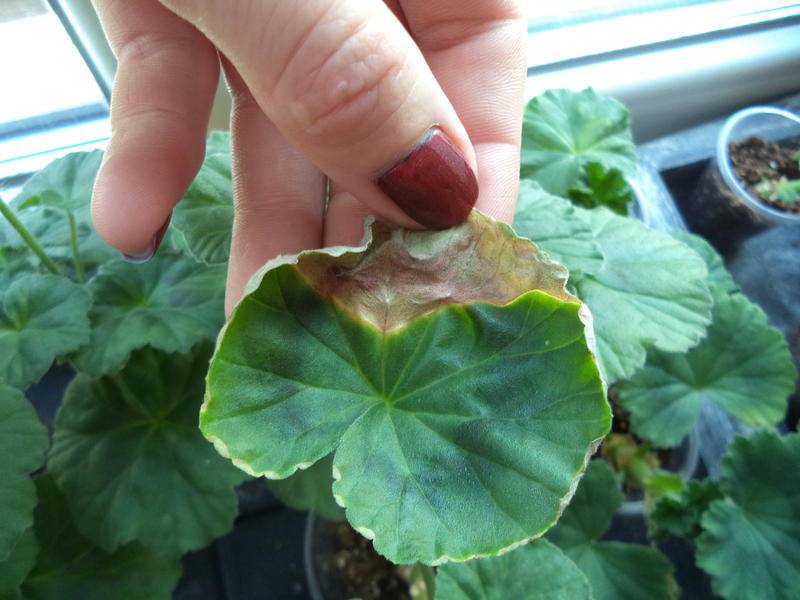
The leaves dry out due to dry air, so you need to provide pelargonium with the right level of humidity.
Overfilling is just as dangerous as underfilling. In this case, the roots begin to rot, and the flower withers. It is urgent to transplant it and dry the root ball. The affected areas must be removed, and the cut sites are sprinkled with crushed coal.
Pests
Whitefly, a tiny white butterfly, can attack pelargonium. The most dangerous of all are its larvae, which feed on roots. It is easy to determine the appearance of the pest - butterflies like to sit on the outside of the leaves.
It is easy to get rid of the pest with the help of the drug Aktara. Such a remedy is also useful for combating spider mites. It appears in dry air.
Pelargonium Lady Gertrude is distinguished by delicate pink flowers that immediately attract attention. The plant is low, ampelous, so it can be planted in pots. This variety does not require special care, so even a beginner can handle it. With the right content, geranium will delight its owner for several years. It is important not to forget about pruning and rest periods for pelargonium.
